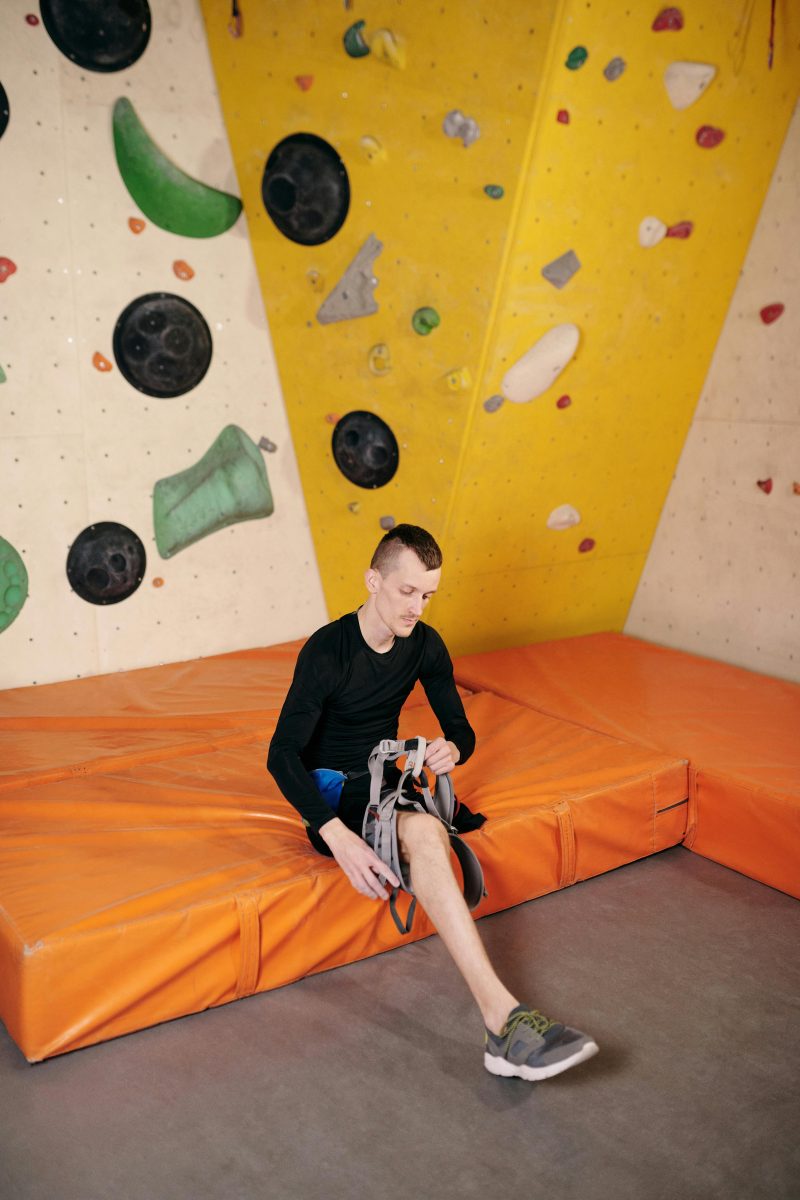Last Updated on: 14th July 2024, 09:37 am
Introduction to Multidisciplinary Fitness

At the heart of a vibrant lifestyle lies a multidisciplinary approach to fitness. This method doesn’t just focus on one type of exercise; it embraces the full spectrum. From strength training and cardio to flexibility exercises and mental wellness, it’s about creating a balanced routine. The importance of this approach cannot be overstated. It ensures that every aspect of health is addressed, leading to improved overall well-being.
- Engaging in different forms of exercise not only prevents boredom but also reduces the risk of injury by not overworking the same muscle groups.
- It promotes a more balanced body, enhances mental health, and ensures long-term adherence to a fitness regimen.
- This holistic strategy to health is not just about physical fitness; it’s about crafting a lifestyle that fosters vitality, resilience, and happiness.
The Science Behind Multidisciplinary Fitness

Understanding the body’s response to different types of exercise is crucial in crafting a well-rounded fitness program. Each form of exercise – be it strength, endurance, flexibility, or balance training – triggers unique physiological changes.
- Strength training enhances muscle and bone density.
- Endurance activities like running improve cardiovascular health.
- Flexibility exercises, such as yoga, increase joint range of motion.
- Balance training enhances coordination and reduces the risk of falls.
When these diverse training modalities are combined, the body is challenged in varied ways, promoting more comprehensive health benefits. This synergy not only accelerates physical improvements but also ensures a more balanced development of the body’s capabilities.
Moreover, a multidisciplinary approach to fitness addresses the body’s adaptability. By regularly introducing new challenges, the body must continually adapt, preventing plateaus and fostering continuous progress. This dynamic approach keeps both the mind and body engaged, enhancing motivation and commitment to a healthier lifestyle.
Key Components of a Multidisciplinary Fitness Program

Strength Training: The Foundation of Muscle and Metabolism
At the core of a well-rounded fitness regimen lies strength training. This component is pivotal, not just for building muscle mass, but for enhancing the body’s metabolic rate as well. By incorporating weight lifting or bodyweight exercises, individuals can significantly improve their physical strength and endurance, laying a solid foundation for overall health and fitness.
Cardiovascular Endurance: The Heart of Fitness
Cardiovascular endurance exercises, such as running, swimming, or cycling, are essential for heart health and stamina. These activities keep the heart rate elevated, promoting better blood circulation and lung capacity. The benefits extend beyond physical health, contributing to improved mental well-being and stress reduction.
Flexibility and Mobility: The Art of Movement
Flexibility and mobility training, often overlooked, are crucial for a balanced fitness program. Practices like yoga or Pilates enhance the range of movement, reduce the risk of injuries, and alleviate muscle tension. This component ensures that the body remains agile and capable of performing a wide array of movements with ease.
Balance and Coordination: The Essence of Functional Fitness
Balance and coordination exercises strengthen the core and improve functional movements, which are vital for daily activities. By focusing on exercises that challenge the body’s equilibrium, such as stability ball workouts or tai chi, individuals can enhance their core stability, reduce the risk of falls, and improve overall movement efficiency.
Designing Your Multidisciplinary Fitness Routine

Embarking on a multidisciplinary fitness journey begins with a clear understanding of your personal fitness goals and acknowledging any limitations. Whether aiming to build strength, enhance flexibility, or improve cardiovascular health, setting realistic objectives is the first step. Recognizing personal limits, such as time constraints or physical conditions, ensures a tailored approach that fosters progress without risking injury.
Striking a balance in your weekly routine is essential. Diversifying workouts across the spectrum—from strength training and cardio to flexibility and balance exercises—prevents monotony and promotes all-around fitness. Planning is key; allocate days for intense activities and others for gentler, restorative practices. This not only maximizes physical benefits but also keeps motivation high.
Incorporating rest and recovery is as crucial as the workouts themselves. Rest days allow the body to heal, reducing the risk of injury and burnout. Active recovery, such as light walking or yoga, can further enhance this process, aiding in muscle repair and mental relaxation. Embracing rest as part of your routine underscores the importance of balance, ensuring long-term success and well-being.
The Role of Nutrition in Multidisciplinary Fitness

A balanced diet is the cornerstone of any effective fitness regimen, serving as the fuel that powers both workouts and recovery. Just as a car requires the right type of fuel to run efficiently, our bodies need the proper nutrients to perform at their best during varied exercise routines. This is especially true in a multidisciplinary fitness approach, where the demands on the body are as diverse as the activities themselves.
Energy and recovery hinge on consuming a mix of carbohydrates, proteins, and fats. Carbohydrates are the body’s primary energy source, crucial for fueling all types of workouts, from high-intensity interval training to long-distance running. Proteins play a key role in repairing and building muscle tissue, especially after strength training sessions. Fats, often misunderstood, are essential for long-term energy, supporting cell growth, and aiding in the absorption of certain nutrients.
Nutritional strategies must be tailored to support the varied demands of a multidisciplinary fitness program. For instance, a pre-workout meal rich in carbohydrates and protein can provide the immediate energy needed for a session, while a post-workout meal with a good balance of protein and fats aids in recovery and muscle repair. Hydration, too, cannot be overlooked; water supports every metabolic function and nutrient transfer in the body, making it crucial for both performance and recovery.
Supplementing the diet with vitamins and minerals ensures the body can effectively process the energy from food, further enhancing fitness outcomes. For those engaging in a rigorous and varied exercise regimen, micronutrients like iron, calcium, and vitamin D are particularly important, supporting everything from oxygen transport to bone health and immune function.
Ultimately, the role of nutrition in a multidisciplinary fitness approach is about more than just fueling the body. It’s about providing the resources needed for repair, recovery, and resilience, ensuring that each workout, no matter the discipline, can be approached with vigor and vitality. By prioritizing nutrition, individuals can maximize their fitness potential, enjoying greater benefits from their efforts and a more balanced, healthy lifestyle.
Overcoming Challenges and Staying Motivated

Maintaining a multidisciplinary fitness routine can be daunting. Common obstacles include time constraints, plateaus in progress, and the complexity of balancing different workout types. It’s easy to feel overwhelmed or lose sight of why you started. Yet, the key to success lies in perseverance and smart strategies.
- Set Clear, Achievable Goals: Break them down into smaller milestones and celebrate each victory, no matter how minor.
- Track Your Progress: Use a journal or an app to monitor your workouts and improvements. This tangible evidence of your journey not only boosts morale but also helps in fine-tuning your routine.
- Embrace Variety: Rotate your activities to keep things fresh and exciting. If you’re dreading your next workout, switch it up. Try a new class or change your environment. The novelty can reignite your passion.
- Build a Support System: Join a community, find a workout buddy, or hire a coach. These connections can provide encouragement, hold you accountable, and share in the joy of your accomplishments.
With determination and these strategies, you’ll not only overcome challenges but also thrive in your fitness endeavors.
The Future of Fitness: Trends and Innovations in Multidisciplinary Approaches

Emerging Fitness Technologies and Their Impact
The landscape of fitness is evolving, with technology playing a pivotal role. Wearable devices, smart equipment, and fitness apps are not just gadgets; they are revolutionizing the way we approach personal fitness. These tools offer unprecedented insights into our health, from tracking heart rates and sleep patterns to customizing workout plans. The impact? A more personalized fitness journey, tailored to meet individual goals and needs. This level of customization ensures that fitness plans are not only effective but also sustainable and enjoyable.
The Growing Importance of Mental Health in Fitness Routines
- Mental Health Takes Center Stage: A healthy mind is just as crucial as a fit body. Comprehensive fitness routines now integrate stress-reducing practices like meditation and mindfulness.
- Goal: Holistic Well-being: The goal is holistic well-being, where mental resilience is built alongside physical strength. This shift acknowledges that mental health is a vital component of overall fitness.
- A Paradigm Shift: The fusion of mental health practices with physical fitness is not just a trend; it’s a paradigm shift. By addressing the psychological aspects of health, individuals can achieve a more balanced state of well-being.
In conclusion, the future of fitness is multidimensional, embracing innovations in technology and a renewed focus on mental health. These trends are not merely passing fads but are reshaping our approach to well-being. As we move forward, the integration of these elements will continue to define the landscape of fitness, making it more personalized, holistic, and accessible to all.
In Closing
Embrace fitness as a multidimensional journey. This approach fosters resilience and joy, blending physical and mental wellness into a harmonious lifestyle. By integrating varied exercises, nutritional balance, and technological innovations, individuals can navigate the complexities of health with confidence. Let’s commit to a future where fitness is not just a routine but a sustainable, enriching path to well-being.
Multidisciplinary Approach to Fitness: Combining Various Activities FAQs
Yes, a multidisciplinary approach to fitness can help with weight loss by maximizing calorie burn through a variety of exercises. It combines cardiovascular activities, which burn calories, with strength training, which builds muscle and increases metabolism. This approach can be more effective than focusing on just one type of exercise.
A multidisciplinary approach to fitness can reduce the risk of injury by promoting balanced muscle development and enhancing flexibility and joint stability. By varying activities, it prevents overuse of specific muscle groups and joints, which is a common cause of injuries. Properly incorporating rest and recovery strategies further minimizes injury risk.
Designing a multidisciplinary fitness plan involves selecting activities that cover the key components of fitness: cardiovascular endurance, muscular strength, flexibility, and balance. It’s important to consider personal interests, goals, and any physical limitations. A balanced plan should include a mix of activities spread throughout the week, allowing for adequate rest and recovery.
A multidisciplinary approach to fitness positively impacts mental health by reducing stress, anxiety, and depression symptoms. Engaging in a variety of physical activities can boost mood through the release of endorphins and provide a sense of accomplishment. Additionally, the variety keeps the mind engaged and can help in developing a more resilient and positive outlook on life.
Combining various activities improves fitness by preventing muscle imbalances and reducing the risk of overuse injuries. It ensures that all muscle groups are engaged and developed evenly, and it keeps the workout routine interesting, which can increase motivation and adherence.
It’s beneficial to change your fitness routine every 4 to 6 weeks when following a multidisciplinary approach. This helps to avoid plateaus, continuously challenge the body, and keep the mind engaged. Regular changes also allow for the incorporation of different activities to address all fitness components over time.
Yes, a multidisciplinary approach to fitness is suitable for beginners as it allows for gradual progression in various activities. Starting with low-intensity exercises and slowly incorporating more challenging workouts can help build a solid fitness foundation. This approach also helps beginners find activities they enjoy, which can improve long-term adherence to an active lifestyle.
What are some examples of activities that can be combined in a multidisciplinary fitness approach?
Activities that can be combined include yoga, swimming, weightlifting, cycling, and running. Each activity targets different fitness components and body parts, providing a comprehensive workout routine. This variety helps to keep the fitness routine engaging and covers all aspects of physical wellness.
A multidisciplinary approach to fitness involves integrating various physical activities and exercises to achieve overall health and wellness. This method allows individuals to work on different aspects of fitness, such as strength, flexibility, endurance, and balance, in a balanced manner. It caters to personal preferences and goals, making fitness routines more enjoyable and sustainable.
Nutrition plays a crucial role in supporting a multidisciplinary approach to fitness by providing the energy and nutrients needed for various activities. A balanced diet enhances performance, aids in recovery, and helps achieve fitness goals, whether it’s weight loss, muscle gain, or improved endurance. Tailoring nutrition to the demands of different activities can optimize results and overall health.
Orlando is a all round athlete from Australia, now resident in Germany. His sports of passion of American Football(Offensive line), weight training and indoor rock climbing where he uses his 195cm wing span to his advantage.



